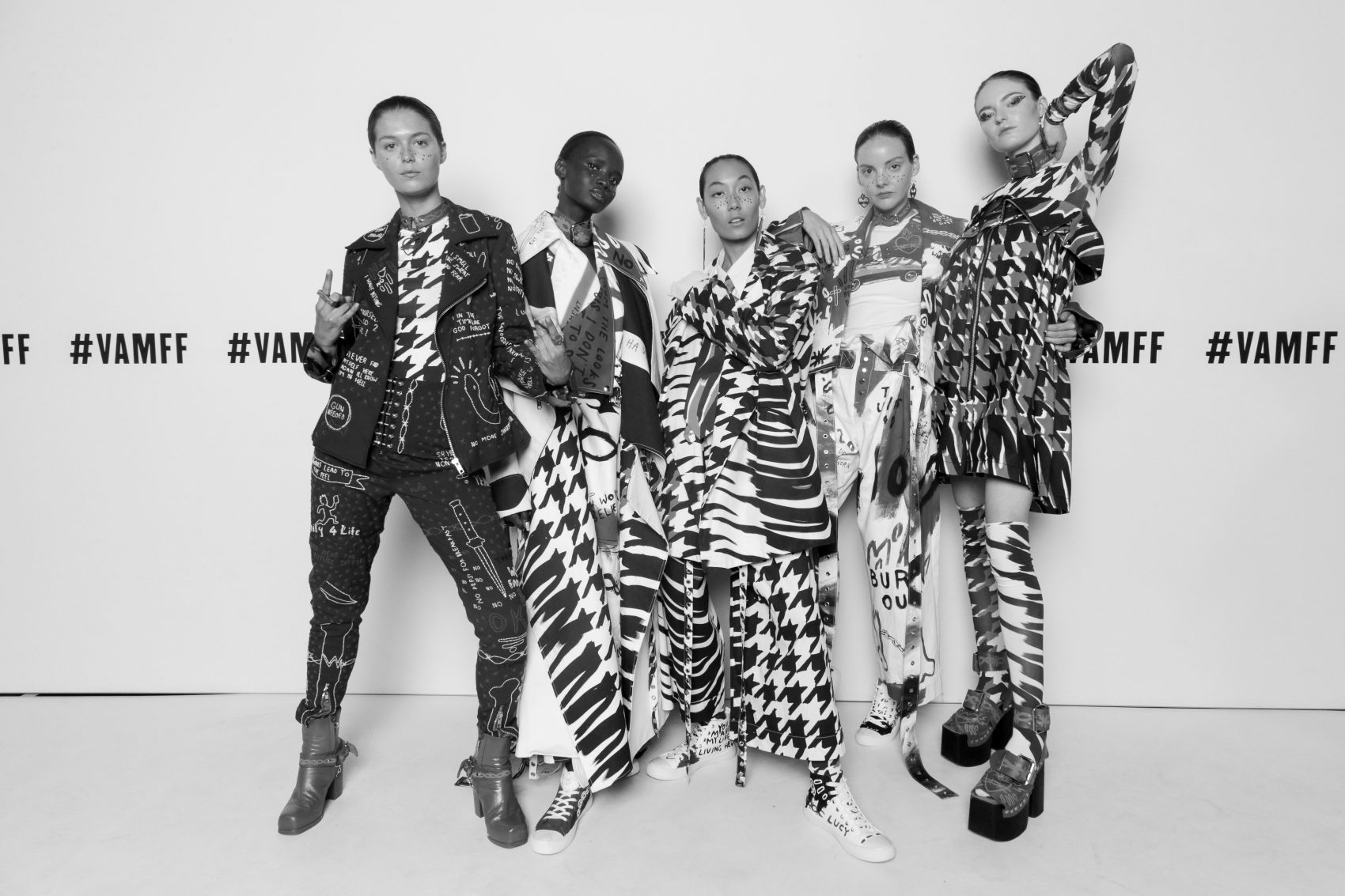Words by Rachael Merritt | @rachael_liz_m
Conformity was never an option for Lucy Dickinson.
The RMIT Bachelor of Fashion Design (Honours) graduate dedicated her final year of study to hand embroidering, painting, laser cutting and 3D printing. This culminated in her collection ‘I thought I’d seen it all, but I hadn’t seen that’—an exploration into the unusual customisation techniques within goth and skinhead subcultures.
Handpicked from institutions Australia-wide, the 22-year-old was one of 12 students to exhibit their graduate collection at the National Graduate Showcase during the 2018 Virgin Australia Melbourne Fashion Festival. Lucy pieced together recycled threads from second hand jumpers and created her own digital prints to form an aesthetic which was undeniably personal. However, infusing her customised style into the commercial fashion industry is a challenge that she is trying to navigate. While creative flair is nurtured and encouraged at university, the reality is employers can and will outweigh individuality to cater for consumer demands.
Annually, the Australian fashion industry retails 21 billion dollars and has a labor force of 12.2 million. Is it possible to maintain creativity in an industry of fast fashion, commercialism and mass consumerism?
Lucy’s self-described “bold” aesthetic, influenced by 70s punk and youth rebellion, has always been quintessential to her designs, ever since she began her own label as a high school student in Newcastle— screen printing band t-shirts and selling them in local shops.
“My style hasn’t changed that much, it’s just become a lot better,” Dickinson said.
But fast fashion, internet shopping and the limitations of the domestic fashion market means young designers are struggling to find opportunities to explore niche areas and practise their own aesthetics in the industry.
“I think a lot of us are pretty disheartened about how fashion is at the moment, and how that [fast fashion] doesn’t encourage creativity…it makes clothes feel more disposable to people because they are so cheap, it’s disappointing,” she said.
For current RMIT Bachelor of Fashion Design (Honours) students, it’s a dilemma they are preparing to navigate. Second year student Evangeline Hoare claimed that fast fashion “is definitely a factor which will cause restrictions for young designers,” but freedom of creativity will depend on the type of job and the market level.
“When you are working for an employer, the goal would mainly be to help create their vision rather than your own. However, to help enhance their collections, you would hope that an employer would be open to new creative ideas and allow their employees to have a chance to show their capabilities,” she said.
Entering her third year of fashion design, Isabella Smith said originality is ultimately what differentiates designers, but working in the ‘ready-to-wear’ sector means reigning in your creativity.
“I definitely don’t think that creativity is restricted in a suffocating way, it’s just about being able to adapt it to a more practical market,” she said.
But how are universities preparing students to walk this fine line? The answer may lie in the significance of events such as Melbourne Fashion Week and university runway shows, which champion individuality and authenticity over conformity.
“Without fashion weeks, student work might just disappear into a saturated market,” Isabella said.
Although bounding with “new and fresh ideas” and yet to be “jaded by the industry,” graduate Lucy Dickinson said recent fashion graduates should prepare for a compromise in their early careers.
“I would be willing to work for someone that I wasn’t that excited about, because I don’t have much of a choice… but I definitely wouldn’t want to spend my whole life working for someone who wasn’t passionate about my aesthetic,” she said.
In the next five years, she hopes to travel to London and work with international labels, eventually hoping to start her own. Lured by the prospects of diverse international markets, brands, design houses and greater appreciation of individual aesthetic, overseas travel is a rising trend amongst aspiring designers. But international experiences are prone to pitfalls, often exhausting students’ finances and entailing unpaid internships.
Despite the shadows of uncertainty, Lucy is confident there will always be a place in the Australian fashion industry for innovative, forward-thinking designers with cutting-edge styles. Whether they will make a career or find success outside of university “isn’t necessarily set in stone,” she said. Despite the restrictions of the industry and the value employers hold for her style, she encouraged students to continue designing, experimenting and pushing boundaries.
“It’s the only time in our lives we have that much creative freedom in fashion, and you have the ability to create a graduate collection that really represents who you are. That’s what you’re going out to the world with.”


